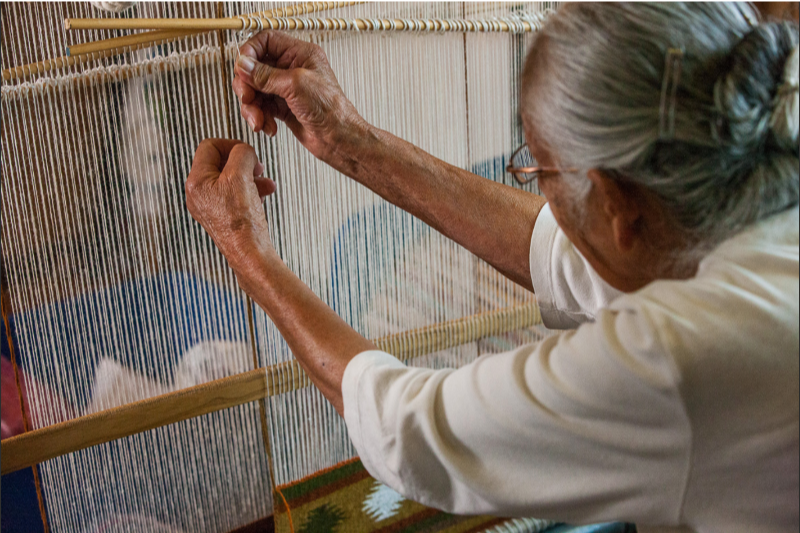Teach This Poem, though developed with a classroom in mind, can be easily adapted for remote-learning, hybrid-learning models, or in-person classes. Please see our suggestions for how to adapt this lesson for remote or blended learning. We have also noted suggestions when applicable and will continue to add to these suggestions online.
The following activities and questions are designed to help your students use their noticing skills to move through the poem and develop their thinking about its meaning with confidence, using what they’ve noticed as evidence for their interpretations. Read more about the framework upon which these activities are based.
-
Warm-up: With your classmates, look at this map and search for your town. What do you notice? How important is land to you? How important do you think land is to Native Americans?
-
Before Reading the Poem: Look at the images in this article about Navajo weavers. (Teachers, you may want to display the images in print or digitally to create a gallery walk.) What stands out to you? What do you notice? Look again. What else do you see? How are these images connected?
-
Reading the Poem: Silently read the poem “A Song of a Navajo Weaver” by Bertrand N. O. Walker. What do you notice about the poem? Note any words or phrases that stand out to you or any questions you might have.
-
Listening to the Poem (Enlist two volunteers to read the poem aloud): Listen as the poem is read aloud twice, and write down any additional words and phrases that stand out to you.
-
Small-group Discussion: Share what you noticed about the poem with a small group of students. Based on the details you just shared with your small group, the resources from the beginning of class, and your answers about the importance of land, how might this poem connect to land and culture and/or cultural traditions? How might this compare to your own life?
-
Whole-class Discussion: How might you describe the speaker in the poem? Why? What do you think the speaker wants? What do you make of the last four lines: “Deftly now I trace the figures, / This of joy and that of woe; / And I leave an open gate-way / For the Dau to come and go.”
-
Extension for Grades 7-8: In honor of Native American Heritage Month, think back to the land map you viewed at the beginning of class. With a partner or small group, research local Native American writers. Here might be a good place to start.
-
Extension for Grades 9-12: Read this poetry portfolio and create your own portfolio of Native American poets. How do these poets feel about land? What is your evidence? Like Natalie Diaz, write an introduction to your portfolio, noting what you enjoyed and learned.
“There is an irregularity in every design woven into a Navajo blanket, thus leaving a place for the ‘Dau’ or spirit of the blanket to go out and in.” Read more by and about Hen-Toh (Bertrand N. O. Walker) from the American Native Press Archives and Sequoyah Research Center.
Praise poem: a poem of tribute or gratitude. Read more.

